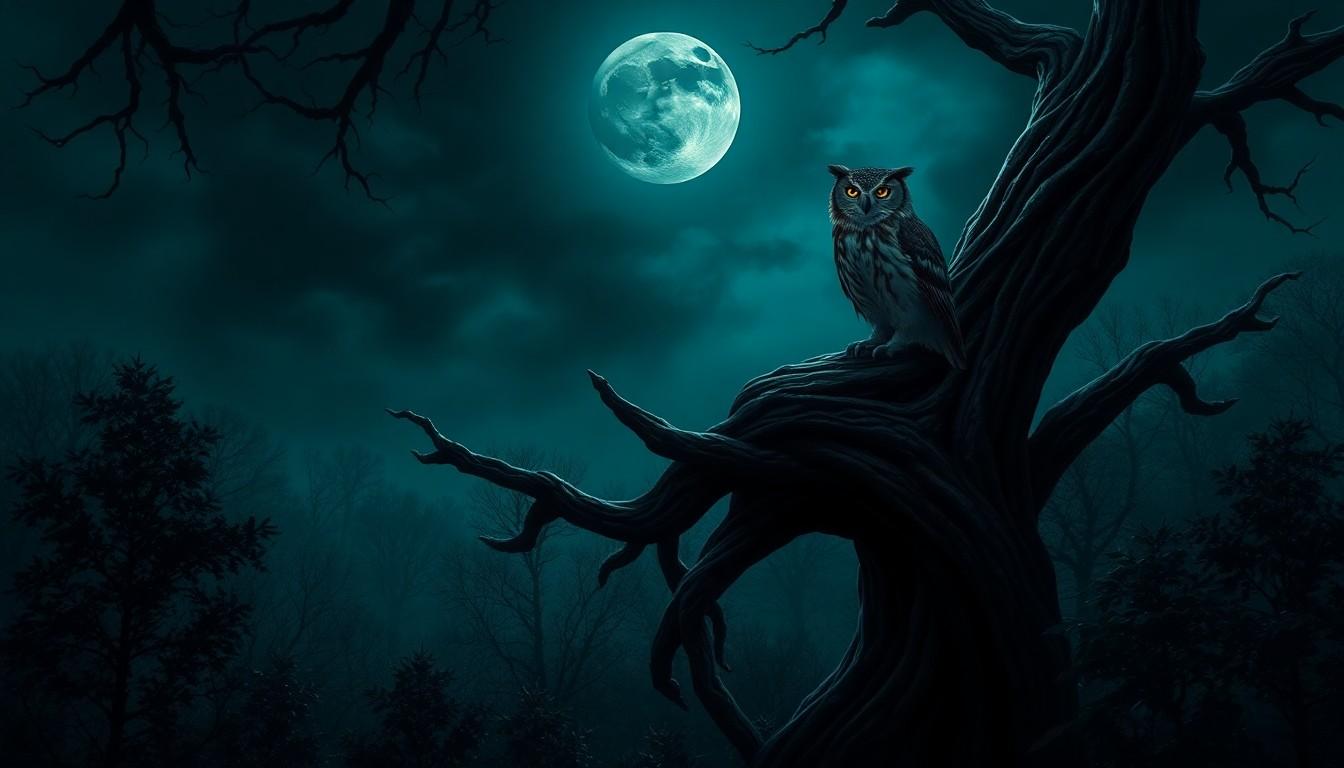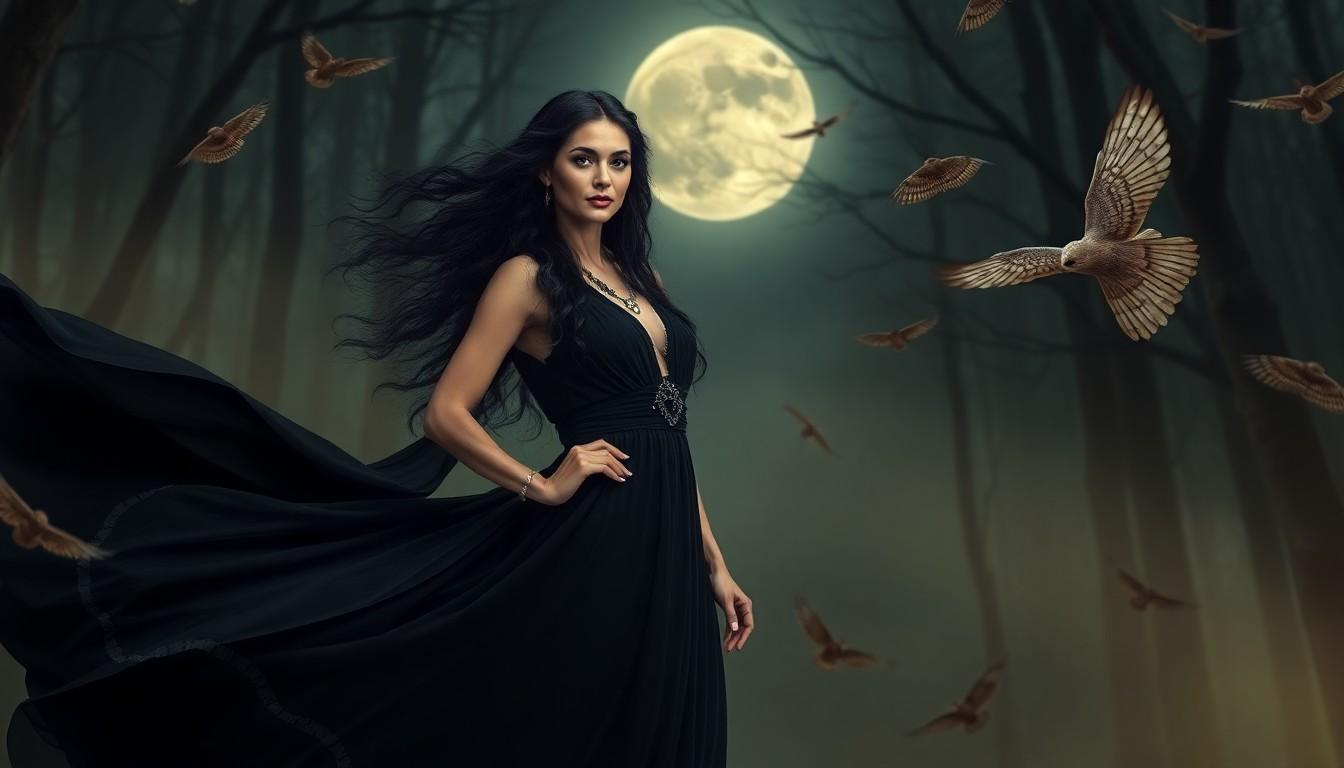In ancient mythology, Lilith emerges as a powerful and enigmatic figure who has captivated the human imagination for millennia. According to Jewish folklore, she was the first woman created alongside Adam, representing female empowerment, independence, and rebellion against patriarchal norms.
Throughout history, Lilith’s story has evolved across various cultures, from Mesopotamian demonology to modern feminist spirituality. She’s been portrayed as a dark goddess and a misunderstood symbol of feminine strength. While some traditions view her as a dangerous demon, others celebrate her as an icon of personal sovereignty and sexual liberation. Today’s spiritual practitioners often invoke Lilith’s energy for self-empowerment transformation and breaking free from societal constraints.
Who Is Lilith: Origins of the Dark Goddess
Lilith emerges as a powerful feminine figure whose origins trace back to ancient civilizations. Her story represents one of the earliest examples of feminine rebellion against patriarchal authority.
Ancient Mesopotamian Roots
Lilith’s earliest incarnation appears in Sumerian mythology as “Lilitu,” a wind spirit or female demon. The Babylonian culture depicted her in clay tablets dating to 2000 BCE when she embodied supernatural power and feminine independence.
Hebrew Mythology and Sacred Texts
Hebrew texts paint Lilith as Adam’s first wife, created from the same earth as him rather than from his rib. The sacred texts describe her departure from Eden after refusing to submit to Adam’s dominance, claiming equal rights in their partnership. Critical attributes associated with Lilith include:
- Dark moon phases connected to feminine mysticism
- The owl as her sacred animal symbol
- Serpentine imagery represents wisdom
- Tree symbolism linking to the Tree of Knowledge
| Time Period | Culture | Lilith’s Role |
|---|---|---|
| 2000 BCE | Babylonian | Wind Spirit/Demon |
| Ancient Hebrew | Jewish | First Wife of Adam |
| Medieval Period | Kabbalistic | Dark Divine Feminine |
- Sensual energy expressing feminine power
- Primal instincts reflecting natural law
- Dark aspects of divine feminine consciousness
- Independent spirit refusing subordination
Lilith’s Role as the First Woman

Jewish folklore identifies Lilith as Adam’s first wife, who was created simultaneously from the same earth as Adam. This creation story emphasizes their inherent equality, contrasting with Eve’s later creation from Adam’s rib.
The Garden of Eden Story
The Garden of Eden narrative portrays Lilith as an equal inhabitant alongside Adam in paradise. According to the Alphabet of Ben Sira, a medieval Jewish text, Lilith resided in Eden during the early stages of creation, participating in the divine plan for humanity’s beginnings.
Rebellion Against Adam
Lilith’s rebellion centered on her refusal to accept a subordinate position during intimate relations with Adam. She challenged the patriarchal structure by:
- Asserting her equal status based on their shared origin on earth
- Rejecting Adam’s attempt to force her into submission
- Declaring her autonomy by leaving Eden rather than compromising her principles
This rebellion establishes Lilith as a symbol of:
- Female independence
- Equal rights advocacy
- Resistance to patriarchal dominance
Dark Goddess Symbolism and Powers

Lilith’s role as a Dark Goddess encompasses a rich tapestry of symbolic meanings related to feminine power independence. Her divine attributes connect to nocturnal energies and spiritual transformation.
Night Creature Associations
Lilith’s name translates directly to “of the night” in ancient Semitic languages. Her nocturnal associations include:
- Guardianship over dark moon phases representing hidden wisdom
- Connection to owls as sacred messengers of intuitive knowledge
- Serpentine symbols of immortality, rebirth, transformation
- Links to primal instincts that emerge in darkness
Feminine Power and Independence
Lilith embodies untamed feminine power through specific symbolic attributes:
- Creation from the same earth as Adam established inherent equality
- Refusal to submit to patriarchal authority in Eden
- Sacred autonomy over personal sovereignty body authority
- Transformation of societal limitations into sources of strength
- Expression of sensual power without shame or restriction
- Personal authenticity over social conformity
- Direct connection to raw feminine energy
- Independence from externally imposed limitations
- Transformation through embracing shadow aspects
- Liberation from restrictive gender roles and expectations
Lilith in Modern Culture and Neo-Paganism

Lilith’s influence extends beyond ancient mythology into contemporary culture, where she represents feminine power, independence, and spiritual sovereignty. Her symbolism continues to evolve through various artistic expressions and spiritual practices.
Feminist Reclamation
Feminist movements embrace Lilith as a potent symbol of female empowerment and resistance against patriarchal structures. Modern interpretations highlight her refusal to submit to male dominance, celebrating her as an archetype of feminine strength and autonomy. In literature and art, Lilith appears in diverse forms:
- Books featuring Lilith explore themes of female liberation and self-determination
- Fantasy novels incorporate her character as a powerful supernatural entity
- Television shows like “Supernatural” adapt her story for modern audiences
- Visual arts depict her as a mysterious and commanding figure
- Comic books reimagine her role as a symbol of rebellion and independence
Contemporary Worship Practices
Neo-Pagan traditions incorporate Lilith into their spiritual practices through specific rituals and observances:
- Dark moon ceremonies honor Lilith’s connection to lunar cycles
- Meditation practices focus on connecting with her transformative energy
- Altar setups include owl feathers and serpentine imagery
- Invocations call upon her aspects of personal sovereignty
- Ritual work emphasizes self-empowerment and breaking societal constraints
Sacred Symbols and Representations
Ancient depictions of Lilith feature distinctive symbolic attributes that showcase her divine power. The Burney Relief is one of the earliest known representations, featuring her as a winged figure with taloned feet standing atop lions between two owls.
Animals and Nature Connections
Lilith’s symbolism incorporates powerful animal associations that reflect her primal nature. The owl serves as her primary sacred animal, representing her connection to night wisdom and nocturnal mysteries. Lions appear in her imagery to demonstrate dominance and sovereignty, while her bird-like features, including wings and taloned feet, emphasize her freedom and ability to transcend earthly boundaries.
Ritual Tools and Offerings
Sacred items associated with Lilith include:
- Dark stones: obsidian & black tourmaline
- Night-blooming flowers: jasmine & moonflower
- Owl Feathers & Imagery
- Red ribbons & cords
- Dark mirrors for scrying
- Twin flames or black candles
- Dark stones represent protection & grounding
- Night flowers symbolize her connection to lunar energy
- Owl items embody wisdom & insight
- Red items signify passion & life force
- Mirrors facilitate spiritual communication
- Dark candles honor her connection to shadow work
| Symbol | Representation | Traditional Use |
|---|---|---|
| Owl | Wisdom & Night Vision | Prophetic Work |
| Lion | Sovereignty & Power | Strength Rituals |
| Wings | Freedom & Transcendence | Liberation Spells |
| Talons | Protection & Defense | Protective Magic |
Conclusion
Lilith is a timeless symbol of feminine power, rebellion, and spiritual sovereignty. Her journey from ancient mythology to modern spiritual practice demonstrates the enduring appeal of her message of independence and self-determination.
Today’s spiritual practitioners continue to draw inspiration from Lilith’s fierce independence and transformative energy. Through sacred symbols, rituals, and modern interpretations, her legacy empowers individuals to embrace their authentic selves and challenge societal constraints.
Whether viewed as a dark goddess feminist icon or spiritual guide, Lilith’s influence remains robust and relevant. She reminds us that true empowerment comes from staying true to our principles despite opposition.

